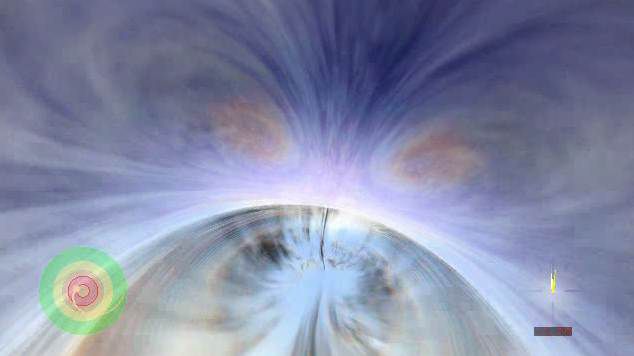The Dark Ages
The Dark Ages
This theory might be another proof for dark matter, the elusive stuff that makes up nearly 70 % of the matter in our universe, and the theory has to do with supermassive black holes.
Supermassive black holes exist in the centers of all galaxies. In fact, supermassive black holes are needed for galaxies to form. The problem is this: how do supermassive black holes form? There wasn't enough time in the universe to form them, considering that many of them are millions if not billions times the mass of our sun.
A black hole forms when a large star (30 or more times the mass of the sun) burns all of its fuel and collapses into a violent event known as a supernova. What happens is the core collapses so rapidly it causes the outer layers of the star to explode in a massive emission of energy. The black hole that forms is slightly less than the mass of the star it came from.
Supermassive black holes are typically 10 million to 20 billion times the mass of our sun. Thus, there has to be some other mechanism to form a supermassive black hole than a supernova explosion.
One theory is that black holes consume gas, stars and planets to grow larger. However, there's a limit to how much they can consume. They end up burping when they eat too fast, shooting out energy from their poles because of the matter flowing around them heating up to millions of degrees. In other words, they get indigestion if they try to eat too much.
So, why is this a problem? The answer is in what astronomers have recently discovered.

Astronomers have observed supermassive black holes only a few hundred million years after the Big Bang. There wouldn't have been enough time for these to grow to 20 billion solar masses.
So, how did they get so large so quickly? That's where the theories come in.
One theory is that during the dark ages of the universe when stars were scarce, massive stars formed by using dark matter as their means of becoming hot enough to fuse hydrogen. When the universe was young, it was more compact. Hydrogen gas was much thicker and could compress much faster to form very large stars, perhaps as much a million solar masses. These large stars could have employed the action of dark matter with its anti matter version to annihilate and create massive energy for the star to begin fusion. Stars normally need fusion to stabilize, but to form a massive size a new star would require something more powerful than gravity. Dark matter/anti-dark matter could have been the mechanism for the ignition of fusion in these early massive stars. These supper-sized dark stars would then form huge black holes when this dark matter process stopped.
However, this dark matter intervention would not be enough to form really super-sized supermassive black holes. The only way they could grow to millions and billions times the mass of our sun is by colliding. Black holes are veracious eaters and they don't care what they eat, including other black holes, which would make them cannibals.
There is also the theory that large amounts of matter and dark matter could have collapsed directly to form supermassive black holes. Combine this process with the collision of these huge black holes and now we could see how these really supermassive black holes formed early in the universe.
Some evidence for the collision idea came from the recent detection of gravity waves that came from the collision of two huge supermassive black holes.
What this means is that supermassive black holes formed after only a few hundred million years after the Big Bang and then played a role in the formation of galaxies. All of these ideas are still theories that need more data.
Thanks for reading.
Bạn đang đọc truyện trên: AzTruyen.Top